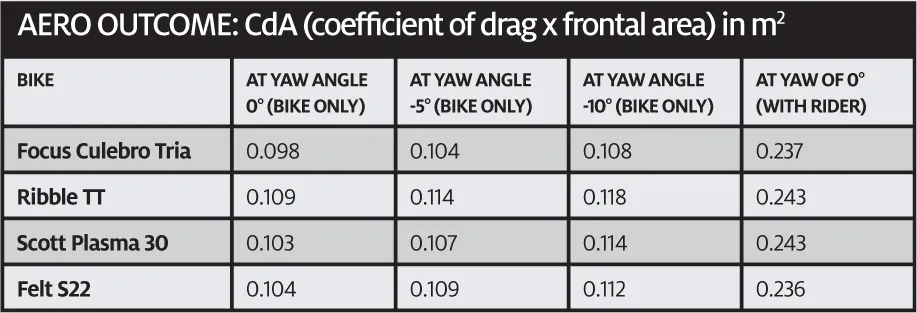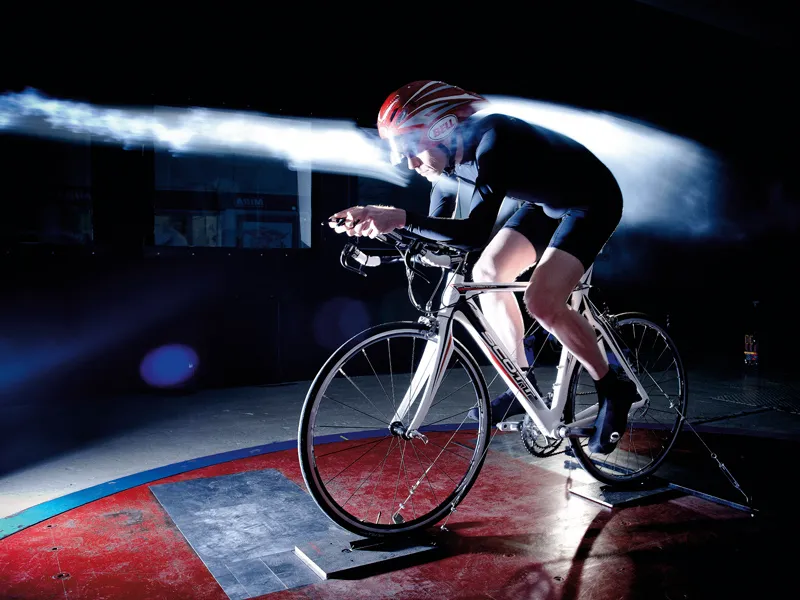For our latest round of aero bike testing, we headed to the MIRA wind tunnel just outside Birmingham. MIRA specialise in testing vehicles of all types, and they've worked with Chris Boardman and his famous Lotus bike, as well as with top triathlete Julie Dibens.
We rode all four bikes first – the Focus Culebro Tria, Ribble TT, Scott Plasma 30 and Felt S22 – before putting them in MIRA’s full-scale wind tunnel. We tested them on a static rig at yaw angles of 0° (straight into the wind), -5° and -10° at a wind speed of 60mph.
The bikes were tested as you would buy them with no changes to their spec. For consistency, we tested each bike with a set of Time RXS pedals, keeping the cranks horizontal each time. We also did a 0° yaw test at 60mph for each bike with the same rider on board kitted out in a skinsuit, aero helmet, shoes and covers.
The high wind speed was used to ensure the readings were stable and give force measurements of a reasonable magnitude. After the testing, the force measurements were extrapolated back to a more realistic speed of 23mph.
The CdA (coefficient of drag x frontal area) figures are the main results we were interested in from an aerodynamic point of view. The lower the CdA, the faster you are. it’s worth noting that CdA at 60mph will essentially be the same as CdA at 20mph for the type of testing we were doing, although the forces will change.

Testing the bikes by themselves gave a clear ranking of the four machines. There was roughly a 10 percent difference in drag across the four bikes, with the Focus the quickest from an aero point of view over the Scott, Felt and Ribble respectively.
But things were altered when there was a rider involved, because of the importance of size and position. We found that it was easier on the Focus and Felt to find a good position, but harder on the other two – the Ribble and Scott.
Considering the bike rider results, if we rode a 25-mile time trial at 250 watts on each of these bikes in the position that we’d set, we’d expect to be about 30 seconds faster on the Felt or the Focus than we would when riding either the Scott or the Ribble.
The other thing that came out of the testing was the stability of the bikes in a crosswind. We found that at -5° and -10° of yaw (relative wind angle) the Felt had the greatest tendency to align itself to zero. This is a good thing, because it means you don’t have to fight to keep the bike on an even keel in a crosswind. The Focus was next best, followed by the Scott, then the Ribble. The latter’s deep wheels counted against it in the crosswind stability stakes.

BikeRadar editor Jeff Jones puts the Focus Culebro Tria through its paces

